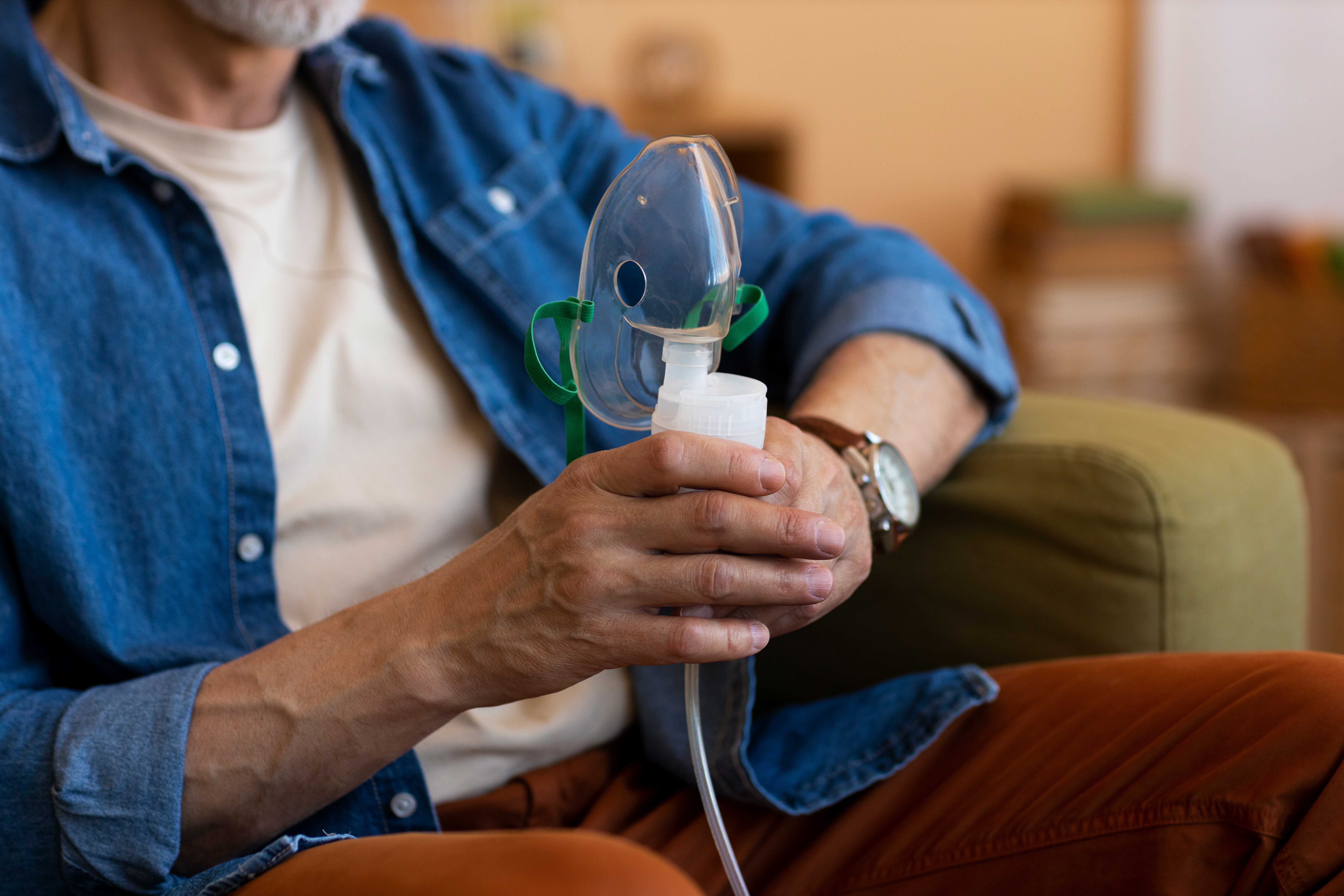Implementing oxygen saturation-based criteria for discontinuation of long-term oxygen therapy in nursing home residents with chronic respiratory disease
Keywords:
oxygen inhalation therapy, respiratory tract diseases, respiratory therapyAbstract
Background: Chronic respiratory diseases represent a significant global health burden, affecting millions of individuals. Long-term oxygen therapy (LTOT) has been a key treatment for patients with chronic hypoxemia due to these conditions, demonstrating benefits for survival and quality of life.
Methods: An observational, analytical, retrospective cohort study was conducted to evaluate clinical indicators for safely discontinuing oxygen therapy in 36 patients aged 50 years or older with chronic respiratory diseases residing in five nursing homes. Data included sociodemographic and clinical variables, such as comorbidities, oxygen saturation levels, and treatment details. A cohort of 36 nursing home residents with chronic respiratory diseases was analyzed.
Results: The study revealed that 83.3% of patients had at least one comorbidity. Most patients (80.6%) used a nasal cannula for oxygen delivery, with a mean flow rate of 2.06 L/min. Approximately 80.6% achieved oxygen saturation >92% without supplemental oxygen. None of the patients who discontinued oxygen required readmission or oxygen reinstatement within the 4-week follow-up period.
Conclusions: This study provides preliminary evidence that achieving oxygen saturation >92% at rest or in exertion may represent a potential clinical indicator for safely discontinuing supplemental oxygen in patients with chronic respiratory diseases. However, given the retrospective design and small sample size, these findings should be interpreted cautiously and validated in larger, prospective studies.
References
1. Sami R, Akafzadeh Savari M, Mansourian M, Ghazavi R, Meamar R. Effect of long-term oxygen therapy on reducing rehospitalization of patients with chronic obstructive pulmonary disease: a systematic review and meta-analysis. Pulm Ther 2023; 9: 255–70.
2. World Health Organization. Chronic respiratory diseases. Geneva: WHO; 2023. Available from: https://www.who.int/news-room/fact-sheets/detail/chronic-respiratory-diseases
3. Raghu G, Remy-Jardin M, Myers JL, Richeldi L, Ryerson CJ, Lederer DJ, et al. Diagnosis of idiopathic pulmonary fibrosis: an official ATS/ERS/JRS/ALAT clinical practice guideline. Am J Respir Crit Care Med 2018; 198: e68–93.
4. O’Driscoll BR, Howard LS, Earis J, Mak V, BTS Emergency Oxygen Guideline Development Group. British Thoracic Society guideline for oxygen use in adults in healthcare and emergency settings. BMJ Open Respir Res 2017; 4: e000170.
5. Jacobs SS, Krishnan JA, Lederer DJ, Ghazipura M, Hossain T, Tan AY, et al. Home oxygen therapy for adults with chronic lung disease: an official American Thoracic Society clinical practice guideline. Am J Respir Crit Care Med 2020; 202: e121–41.
6. Khor YH, Wong R, McDonald CF. Post-hospitalization short-term oxygen therapy: use of a clinical management pathway and long-term follow-up. Respir Care 2019; 64: 272–8.
7. Cho KH, Kim YS, Nam CM, Kim TH, Kim SJ, Han KT, et al. Home oxygen therapy reduces risk of hospitalization in patients with chronic obstructive pulmonary disease: a population-based retrospective cohort study, 2005–2012. BMJ Open 2015; 5: e009062.
8. Spece LJ, Epler EM, Duan K, Donovan LM, Griffith MF, LaBedz S, et al. Reassessment of home oxygen prescription after hospitalization for chronic obstructive pulmonary disease: a potential target for deimplementation. Ann Am Thorac Soc 2021; 18: 378–85.
9. IMARC Group. Oxygen pricing trends and forecast. Available from: https://www.imarcgroup.com/oxygen-pricing-report
10. Hess MW. Oxygen therapy in COPD. Respir Care 2023; 68: 998–1012.
11. Pelletier-Fleury N, Lanoe JL, Fleury B, Fardeau M. The cost of treating COPD patients with long-term oxygen therapy in a French population. Chest 1996; 110: 411–6.
12. Poder TG, Kouakou CR, Bouchard PA. Cost-effectiveness of Free O2 in patients with chronic obstructive pulmonary disease hospitalised for acute exacerbations: analysis of a pilot study in Quebec. BMJ Open 2018; 8: e018835.
13. Nishimura M. High-flow nasal cannula oxygen therapy in adults: physiological benefits, indications, clinical benefits, and adverse effects. Respir Care 2016; 61: 529–41.
14. Adler D, Pépin JL, Dupuis-Lozeron E. Comorbidities and subgroups of patients surviving severe acute hypercapnic respiratory failure in the intensive care unit. Am J Respir Crit Care Med 2017; 196: 200–7.
15. Brown JP, Martinez CH. Chronic obstructive pulmonary disease comorbidities. Curr Opin Pulm Med 2016; 22: 113–8.
16. Celli B, MacNee W. Standards for the diagnosis and treatment of patients with COPD: a summary of ATS/ERS position paper. Eur Respir J 2004; 23: 932–46.
17. Wiener R, Ouellet D, Diamond E. An official American Thoracic Society/American College of Chest Physicians policy statement: the Choosing Wisely top five list in adult pulmonary medicine. Chest 2014; 145: 1383–91.
18. Kahn PA, Worsham CM, Berland G. Characterization of prescription patterns and estimated costs for use of oxygen concentrators for home oxygen therapy in the US. JAMA Netw Open 2021; 4: e2129967.
19. Oxygen Concentrator Store. How much is an oxygen tank? Available from: https://www.oxygenconcentratorstore.com/help-center/how-much-is-an-oxygen-tank
20. Oxygen Delivers. Portable oxygen cylinder. Available from: https://rent.oxygendelivers.com/products/portable-oxygen-cylinder
21. Oxygen Concentrator Store. How much does it cost to rent a portable oxygen concentrator? Available from: https://www.oxygenconcentratorstore.com/help-center/how-much-does-it-cost-to-rent-a-portable-oxygen-concentrator
22. High Volume Oxygen. How much does oxygen cost? Available from: https://highvolumeoxygen.com/how-much-does-oxygen-cost
23. Complete Medical Supply. Oxygen tanks Houston. Available from: https://www.completemedicalsupply.net/oxygen-tanks-houston

Downloads
Published
Issue
Section
License
Copyright (c) 2025 The Author(s)

This work is licensed under a Creative Commons Attribution-NonCommercial 4.0 International License.
Mattioli 1885 has chosen to apply the Creative Commons Attribution NonCommercial 4.0 International License (CC BY-NC 4.0) to all manuscripts to be published.




